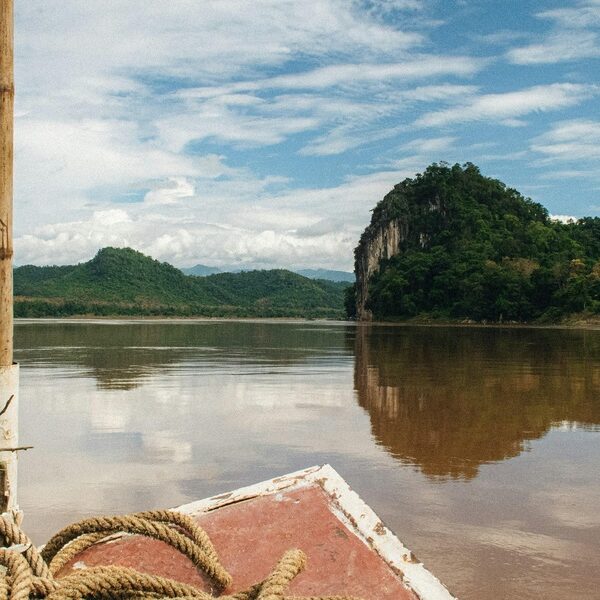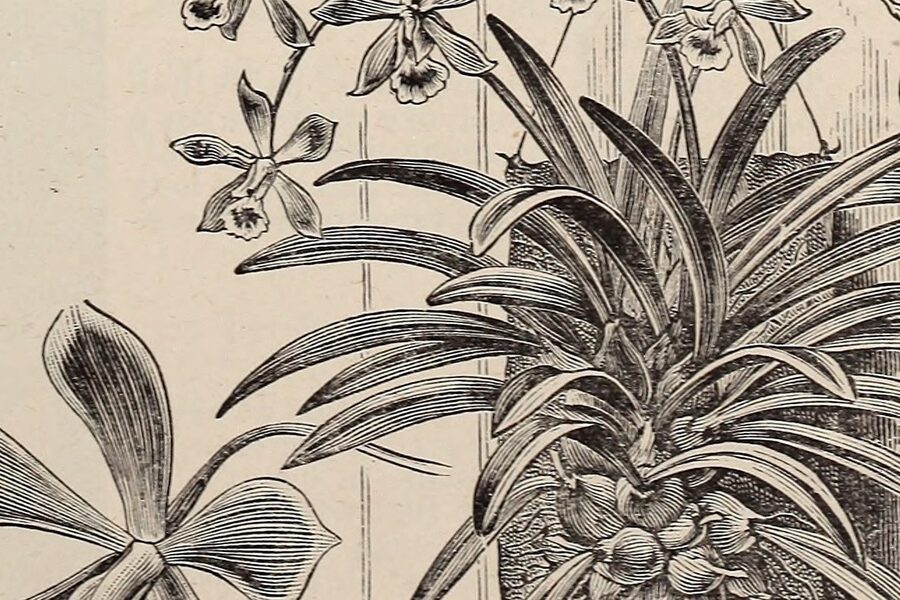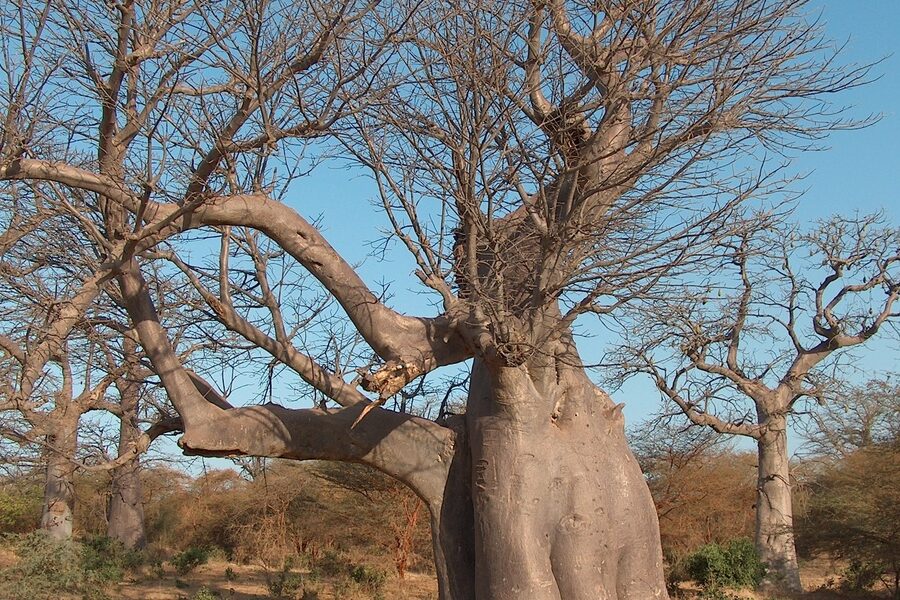From maritime shores to Arctic tundra and interior prairies, Canada’s plant life reflects a wide range of climates and landscapes. A compact list makes it easier to spot regionally common species and discover plants you might otherwise overlook on hikes or in your garden.
There are 47 Plants of Canada, ranging from Alberta Wild Rose to Wild Strawberry; for each entry you’ll find below the Scientific name, Provinces/Territories found, and Height (cm).
How can I use this list to identify plants in my area?
Filter the Provinces/Territories found column to your region, then match heights and scientific names with photos or a field guide — scientific names prevent confusion from local common names. Use leaf shape, bloom time and local keys or apps for a confident identification.
Does the list include both native and introduced species?
Yes — national lists often mix native and naturalized plants. Use the Scientific name to look up origin and conservation status, and consult provincial resources if you need management or protection guidance.
Plants of Canada
| Name | Scientific name | Provinces/Territories found | Height (cm) |
|---|---|---|---|
| Sugar Maple | Acer saccharum | ON, QC, NB, NS, PE | 2,500-3,500 |
| White Trillium | Trillium grandiflorum | ON, QC | 15-45 |
| Fireweed | Chamerion angustifolium | BC, AB, SK, MB, ON, QC, NB, NS, PE, NL, YT, NT, NU | 50-250 |
| Trembling Aspen | Populus tremuloides | BC, AB, SK, MB, ON, QC, NB, NS, PE, NL, YT, NT | 1,500-2,500 |
| Saskatoon Berry | Amelanchier alnifolia | BC, AB, SK, MB, ON, QC, YT, NT | 100-500 |
| Douglas-fir | Pseudotsuga menziesii | BC, AB | 4,000-7,500 |
| Bunchberry | Cornus canadensis | BC, AB, SK, MB, ON, QC, NB, NS, PE, NL, YT, NT, NU | 5-20 |
| Labrador Tea | Rhododendron groenlandicum | BC, AB, SK, MB, ON, QC, NB, NS, PE, NL, YT, NT, NU | 30-120 |
| Red Osier Dogwood | Cornus sericea | BC, AB, SK, MB, ON, QC, NB, NS, PE, NL, YT, NT | 150-400 |
| Ostrich Fern | Matteuccia struthiopteris | BC, AB, SK, MB, ON, QC, NB, NS, PE, NL, YT | 90-170 |
| White Spruce | Picea glauca | BC, AB, SK, MB, ON, QC, NB, NS, PE, NL, YT, NT | 1,500-3,000 |
| Pacific Dogwood | Cornus nuttallii | BC | 600-2,000 |
| Prairie Crocus | Pulsatilla nuttalliana | BC, AB, SK, MB, YT, NT | 10-40 |
| Bearberry | Arctostaphylos uva-ursi | BC, AB, SK, MB, ON, QC, NB, NS, PE, NL, YT, NT, NU | 5-15 |
| Blue Flag Iris | Iris versicolor | SK, MB, ON, QC, NB, NS, PE, NL | 50-100 |
| Western Red Cedar | Thuja plicata | BC, AB | 5,000-6,000 |
| Paper Birch | Betula papyrifera | BC, AB, SK, MB, ON, QC, NB, NS, PE, NL, YT, NT | 1,500-2,500 |
| Purple Pitcher Plant | Sarracenia purpurea | BC, AB, SK, MB, ON, QC, NB, NS, PE, NL, NT | 20-60 |
| Canada Goldenrod | Solidago canadensis | BC, AB, SK, MB, ON, QC, NB, NS, PE, NL, YT, NT | 30-150 |
| Eastern White Pine | Pinus strobus | MB, ON, QC, NB, NS, PE, NL | 3,000-5,000 |
| Alberta Wild Rose | Rosa acicularis | BC, AB, SK, MB, ON, QC, YT, NT, NU | 30-150 |
| Salal | Gaultheria shallon | BC | 30-250 |
| Common Yarrow | Achillea millefolium | BC, AB, SK, MB, ON, QC, NB, NS, PE, NL, YT, NT, NU | 20-100 |
| Common Cattail | Typha latifolia | BC, AB, SK, MB, ON, QC, NB, NS, PE, YT, NT | 100-300 |
| Stinging Nettle | Urtica dioica | BC, AB, SK, MB, ON, QC, NB, NS, PE, NL, YT, NT | 60-200 |
| Highbush Cranberry | Viburnum trilobum | BC, AB, SK, MB, ON, QC, NB, NS, PE, NL, YT, NT | 200-400 |
| Jack Pine | Pinus banksiana | BC, AB, SK, MB, ON, QC, NB, NS, YT, NT | 900-2,200 |
| Purple Saxifrage | Saxifraga oppositifolia | BC, AB, NL, YT, NT, NU | 2-5 |
| Common Juniper | Juniperus communis | BC, AB, SK, MB, ON, QC, NB, NS, PE, NL, YT, NT, NU | 50-400 |
| Lodgepole Pine | Pinus contorta | BC, AB, SK, YT | 2,000-3,500 |
| Tall Oregon Grape | Mahonia aquifolium | BC | 50-300 |
| Mayflower | Epigaea repens | MB, ON, QC, NB, NS, PE, NL | 5-15 |
| Big Bluestem | Andropogon gerardii | SK, MB, ON, QC | 100-250 |
| Showy Milkweed | Asclepias speciosa | BC, AB, SK, MB, ON | 60-150 |
| Red Clover | Trifolium pratense | BC, AB, SK, MB, ON, QC, NB, NS, PE, NL, YT | 20-80 |
| Tamarack Larch | Larix laricina | BC, AB, SK, MB, ON, QC, NB, NS, PE, NL, YT, NT | 1,000-2,000 |
| Black Spruce | Picea mariana | BC, AB, SK, MB, ON, QC, NB, NS, PE, NL, YT, NT | 500-1,500 |
| Wild Strawberry | Fragaria virginiana | BC, AB, SK, MB, ON, QC, NB, NS, PE, NL, YT, NT | 5-20 |
| Bluebead Lily | Clintonia borealis | MB, ON, QC, NB, NS, PE, NL | 15-40 |
| Balsam Fir | Abies balsamea | AB, SK, MB, ON, QC, NB, NS, PE, NL | 1,400-2,000 |
| Wild Sarsaparilla | Aralia nudicaulis | BC, AB, SK, MB, ON, QC, NB, NS, PE, NL, NT | 30-60 |
| St. John’s Wort | Hypericum perforatum | BC, AB, SK, MB, ON, QC, NB, NS, PE, NL | 30-90 |
| Western Red Lily | Lilium philadelphicum | BC, AB, SK, MB, ON, QC | 30-90 |
| Pink Lady’s Slipper | Cypripedium acaule | SK, MB, ON, QC, NB, NS, PE, NL, NT | 15-60 |
| Common Plantain | Plantago major | BC, AB, SK, MB, ON, QC, NB, NS, PE, NL, YT, NT | 10-40 |
| Pickerelweed | Pontederia cordata | MB, ON, QC, NB, NS, PE | 50-120 |
| Arbutus | Arbutus menziesii | BC | 1,000-3,000 |
Images and Descriptions
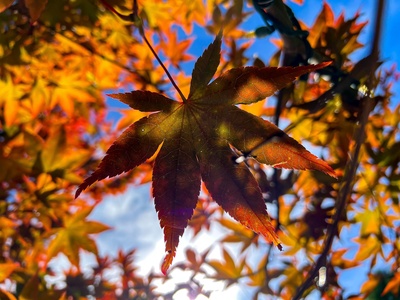
Sugar Maple
Canada’s national tree, famed for its brilliant autumn foliage and the sap used for maple syrup. A key species in Eastern Canada’s hardwood forests, its iconic five-lobed leaf adorns the Canadian flag. It prefers rich, well-drained soils and is a valuable timber tree.
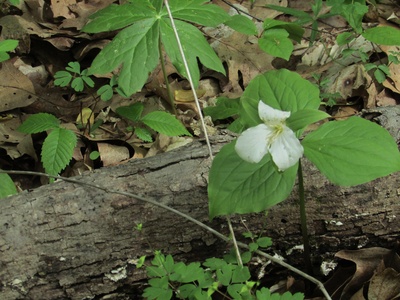
White Trillium
The provincial flower of Ontario, this iconic spring ephemeral has a single, large white flower with three petals above three broad leaves. It carpets the floor of deciduous woodlands in early spring, with flowers aging to a pale pink before fading.
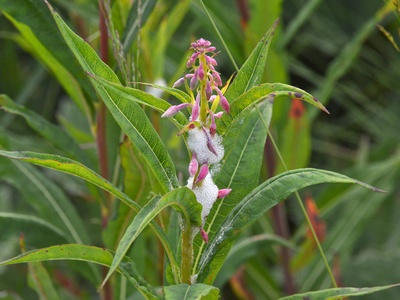
Fireweed
A tall, vibrant perennial recognized by its spire of bright pink to magenta flowers. It is a pioneer species, rapidly colonizing disturbed areas like clearings and roadsides. Fireweed is the floral emblem of the Yukon, blooming from mid-summer into fall.
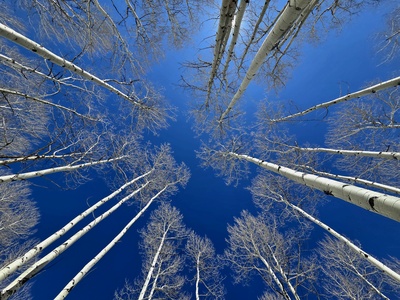
Trembling Aspen
One of North America’s most widely distributed trees, known for its smooth, pale bark and leaves that tremble in the slightest breeze. It grows in clonal colonies and provides crucial habitat for wildlife across boreal, parkland, and montane regions of Canada.
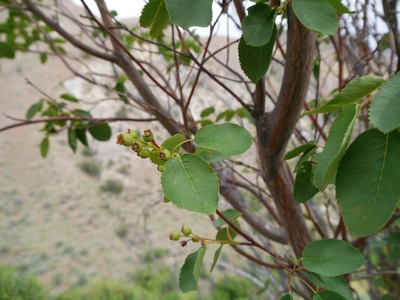
Saskatoon Berry
A hardy deciduous shrub native to prairie and parkland regions, prized for its sweet, purple-black berries. In spring, it’s covered in clusters of white flowers, followed by berries in early summer that are a food source for wildlife and people alike.
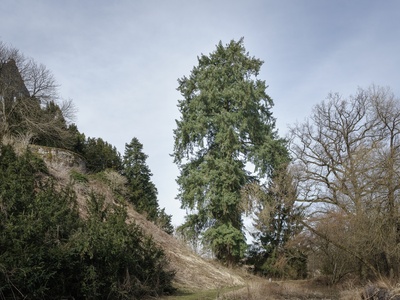
Douglas-fir
A majestic conifer of Western Canada, dominating coastal and montane forests. It is not a true fir and is identified by its unique cones, which have three-pointed bracts extending from the scales. It is one of Canada’s most important timber species.
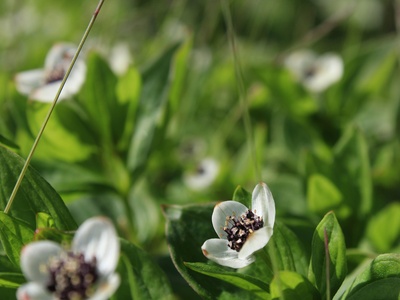
Bunchberry
A low-growing perennial that forms a lush groundcover in cool, moist forests. It features a whorl of leaves, a flower with four prominent white bracts, and a cluster of bright red berries in late summer. It is a member of the dogwood family.

Labrador Tea
An evergreen shrub found in bogs, muskeg, and wet coniferous forests across Canada. Its leathery leaves have fuzzy, rust-coloured undersides and a fragrant aroma when crushed. Clusters of small white flowers bloom in late spring and early summer.
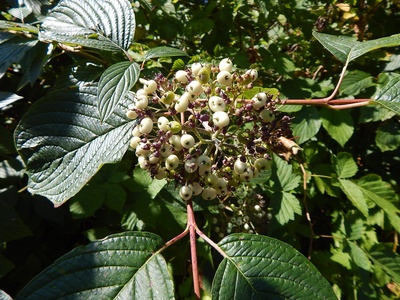
Red Osier Dogwood
A widespread deciduous shrub known for its striking red stems that provide winter colour. It thrives in moist soils along streams and wetlands. Clusters of small white flowers appear in spring, followed by white berries that are eaten by birds.

Ostrich Fern
A large, elegant fern forming vase-like clumps in floodplain forests and along stream banks. In spring, its edible coiled young fronds, known as fiddleheads, are a popular foraged food. The sterile fronds resemble ostrich plumes, giving the plant its name.
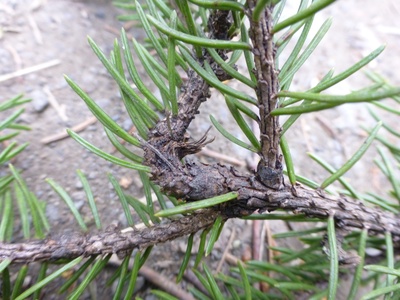
White Spruce
A dominant tree of the boreal forest, found coast to coast in Canada. It has four-sided, sharp-tipped needles and slender, flexible cones. This hardy conifer is a vital source of lumber and pulp and is the provincial tree of Manitoba.

Pacific Dogwood
The provincial flower of British Columbia, this small tree is famous for its spectacular spring and fall blooms. The true flowers are small and clustered, but they are surrounded by four to six large, showy white bracts. It grows in coastal forest understories.
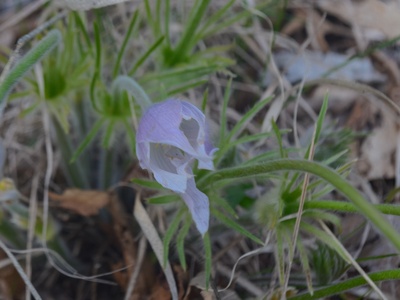
Prairie Crocus
One of the first signs of spring on the prairies and the provincial flower of Manitoba. Its fuzzy stems bear a single, bell-shaped flower ranging from pale lavender to deep purple. It grows in open, dry grasslands and woodlands before its leaves fully emerge.
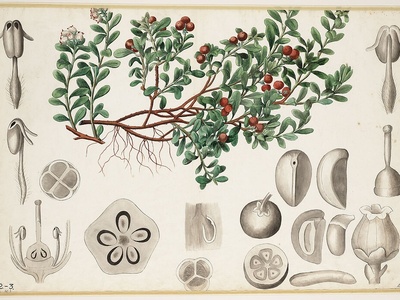
Bearberry
A low-lying, mat-forming evergreen shrub common in dry, sandy, or rocky soils across Canada. It has small, leathery leaves, delicate pinkish-white bell-shaped flowers, and bright red berries. The plant is extremely hardy, tolerating arctic and alpine conditions.
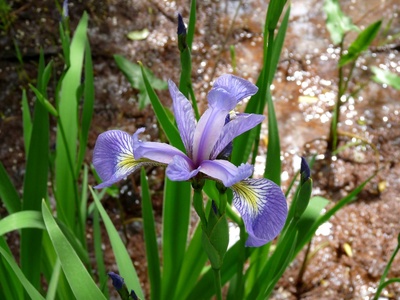
Blue Flag Iris
The provincial flower of Quebec, this beautiful wildflower grows in marshes, swamps, and along shorelines. It has distinctive, showy flowers with deep blue to purple drooping sepals marked with yellow and white. It blooms in early to mid-summer.

Western Red Cedar
A monumental conifer of British Columbia’s coastal rainforests and the province’s official tree. It has scale-like leaves in flat, aromatic sprays and fibrous, reddish-brown bark. It holds immense cultural significance for coastal First Nations and is valued for its rot-resistant wood.
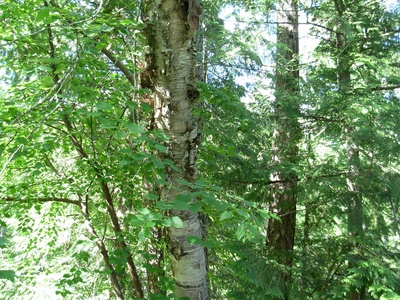
Paper Birch
Easily recognized by its distinctive white bark that peels in papery layers. This fast-growing, adaptable tree is found in forests across Canada. It is the provincial tree of Saskatchewan and was historically used by Indigenous peoples for making canoes, baskets, and shelters.
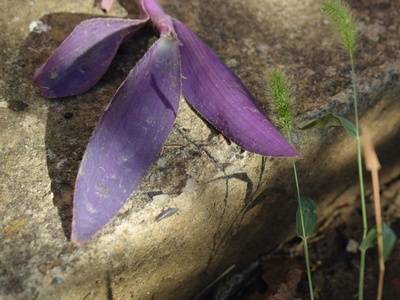
Purple Pitcher Plant
A fascinating carnivorous plant and the provincial flower of Newfoundland and Labrador. It grows in nutrient-poor bogs and fens, where its pitcher-shaped leaves fill with water to trap and digest insects. A single, unusual reddish-purple flower rises on a tall stalk.

Canada Goldenrod
A very common and widespread perennial often seen in fields, meadows, and roadsides in late summer and fall. It produces dense, plume-like clusters of tiny, bright yellow flowers. Despite a common misconception, its heavy pollen is not a major cause of hay fever.

Eastern White Pine
The tallest tree in eastern Canada and the provincial tree of Ontario. It is easily identified by its long, soft needles that grow in bundles of five. Historically, these majestic trees were prized for ship masts due to their tall, straight trunks.

Alberta Wild Rose
The provincial flower of Alberta, this hardy, prickly shrub is found in woodlands, thickets, and clearings. In early summer, it produces large, fragrant pink flowers with yellow centres, which later develop into edible red hips rich in vitamin C.

Salal
A dominant evergreen shrub in the understory of British Columbia’s coastal forests. It has tough, leathery oval leaves, urn-shaped pinkish-white flowers, and edible, dark purple berries. Salal is an important food source for wildlife and is harvested for the floral industry.
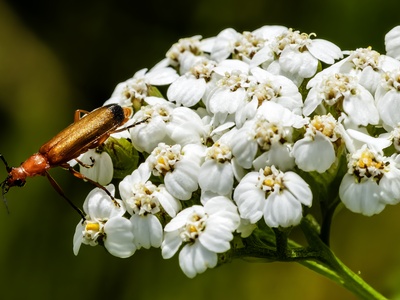
Common Yarrow
A hardy, aromatic perennial with feathery, fern-like leaves. It produces flat-topped clusters of many small, typically white flowers and blooms throughout the summer in meadows, fields, and disturbed areas. It has a long history of use in traditional medicine.
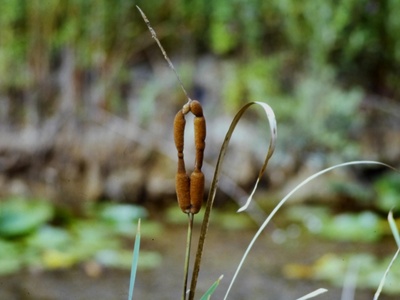
Common Cattail
An unmistakable wetland plant with long, sword-like leaves and a dense, brown, sausage-shaped flower spike. It provides critical habitat and food for wildlife in marshes and ponds across Canada. Every part of the plant is edible at some stage of its growth.

Stinging Nettle
A herbaceous perennial found in moist, rich soils, known for the stinging hairs on its leaves and stems that cause a painful rash. Despite this, young nettle shoots are a highly nutritious wild edible when cooked, tasting similar to spinach.
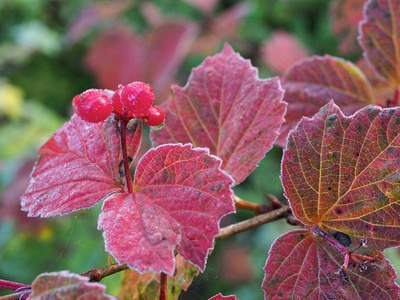
Highbush Cranberry
A deciduous shrub that produces flat-topped clusters of white flowers in late spring. In fall, it bears drooping clusters of tart, bright red berries that persist into winter, providing food for birds. Its leaves resemble those of a maple tree.
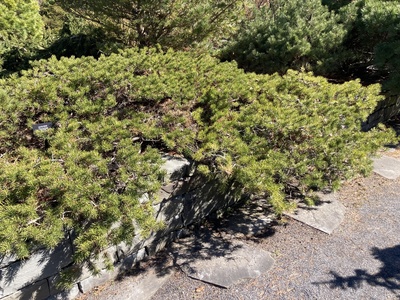
Jack Pine
A rugged, scraggly conifer common in the boreal forest, especially on sandy or rocky soils. Its needles grow in pairs, and its curved cones are serotinous, meaning they often require heat from a fire to open and release their seeds.

Purple Saxifrage
One of the first plants to bloom in the High Arctic, often flowering while snow is still on the ground. This low, mat-forming plant has tiny leaves and surprisingly large, vibrant purple-pink flowers. It is the floral emblem of Nunavut.
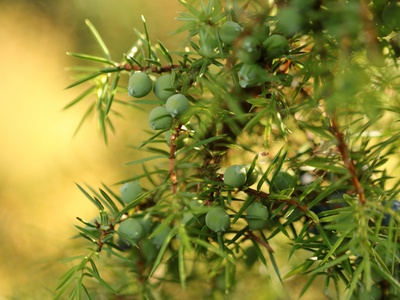
Common Juniper
A highly variable conifer that can grow as a low, spreading shrub or a small tree. Found in a wide range of habitats across Canada, it has sharp, awl-like needles and produces small, berry-like cones that are blue-black when mature.
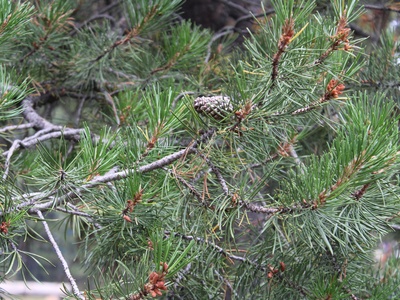
Lodgepole Pine
A slender, straight-trunked pine that is a cornerstone of forests in western and northern Canada. It is the provincial tree of Alberta. Like Jack Pine, many of its cones are serotinous, adapted to regenerate after forest fires.
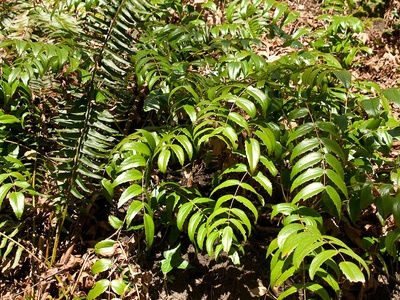
Tall Oregon Grape
A broadleaf evergreen shrub native to southern British Columbia. It has spiny, holly-like compound leaves that turn bronze or purple in winter. Bright yellow, fragrant flowers appear in spring, followed by clusters of sour, edible, blue-purple berries.

Mayflower
The provincial flower of Nova Scotia, also known as trailing arbutus. This low, creeping evergreen has leathery oval leaves and blooms very early in spring, producing clusters of intensely fragrant, pink or white waxy flowers, often hidden under leaf litter.
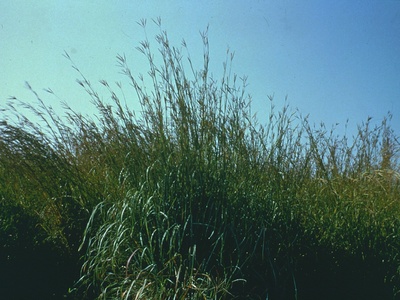
Big Bluestem
A tall, dominant grass of the North American tallgrass prairie, including remnant prairies in Manitoba and Ontario. In late summer, its flowering stems rise high above the foliage, topped with a distinctive three-branched seed head resembling a turkey’s foot.

Showy Milkweed
A stout perennial with large, velvety leaves and impressive spherical clusters of pinkish-purple, star-shaped flowers. It is a critical host plant for the caterpillars of the Monarch butterfly and is found in prairies, fields, and open areas.

Red Clover
A familiar, naturalized legume found in fields, lawns, and roadsides. It is identified by its three-part leaves (often with a pale chevron) and globular pink or reddish-purple flower heads. It is an important forage crop and soil-improving plant.
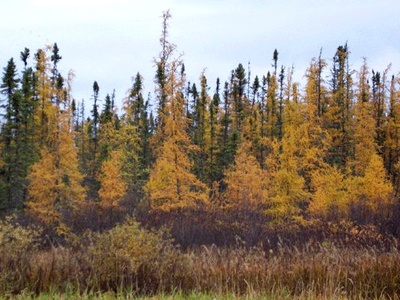
Tamarack Larch
A unique deciduous conifer found in bogs and moist soils across Canada. In spring, it grows soft, bright green needles in clusters, which turn a brilliant golden-yellow in autumn before falling off, a rare trait for a conifer.
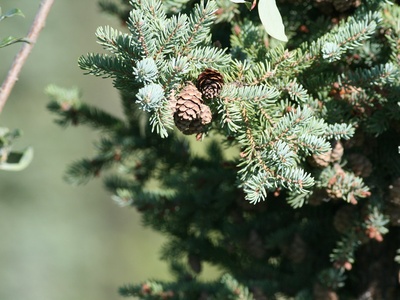
Black Spruce
A slow-growing, resilient conifer that dominates much of Canada’s boreal forest, especially in wet, boggy areas. It has short, bluish-green needles and small, purplish-brown cones that persist on the tree for years. It is a key species for pulpwood.

Wild Strawberry
A low-growing perennial that spreads by runners, found in fields and open woods. It produces small white flowers in spring, followed by intensely flavourful, though small, red berries in early summer. It is an ancestor of the modern garden strawberry.

Bluebead Lily
A distinctive woodland plant with two to four large, glossy, basal leaves. In late spring, a leafless stalk rises, bearing a cluster of nodding, pale yellow, bell-shaped flowers. These are followed by striking, inedible, porcelain-blue berries in late summer.
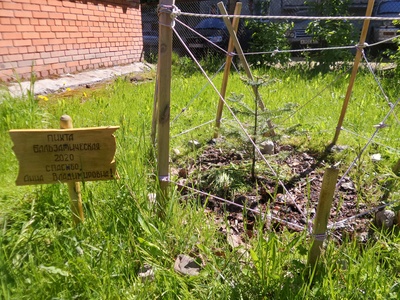
Balsam Fir
A classic evergreen of the boreal forest, well-known as a popular Christmas tree. It has flat, fragrant needles and smooth bark dotted with sticky resin blisters. Its upright cones disintegrate on the tree when mature, leaving a central spike.

Wild Sarsaparilla
A common forest understory plant consisting of a single long stalk that branches into three parts, each with compound leaves. A separate, shorter stalk bears three globe-like clusters of tiny greenish-white flowers, which later become purple-black berries.

St. John’s Wort
A naturalized perennial herb found in sunny, disturbed sites. It has star-shaped yellow flowers with five petals that bloom around the summer solstice. Its leaves have tiny translucent dots, visible when held to the light. It is widely known for its medicinal uses.

Western Red Lily
The provincial flower of Saskatchewan, this spectacular native lily has large, upward-facing, bright reddish-orange flowers with dark spots near the centre. It grows in prairies and open woodlands but has become rare in many areas due to habitat loss and picking.

Pink Lady’s Slipper
A beautiful and unique wild orchid, the provincial flower of Prince Edward Island. It has two broad basal leaves and a single, large, pouch-like pink flower on a leafless stalk. It grows in acidic soils in mixed-wood forests and bogs.
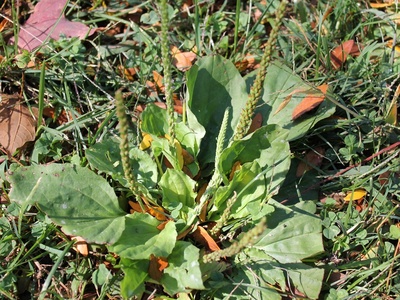
Common Plantain
A resilient, naturalized weed found in lawns, paths, and disturbed ground across Canada. It forms a basal rosette of tough, oval leaves with prominent parallel veins. Inconspicuous flowers grow on a dense, leafless spike. It is known for its durability and medicinal properties.
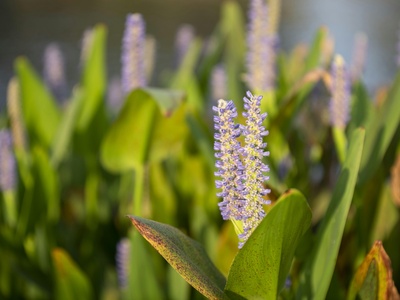
Pickerelweed
An aquatic plant that grows in shallow, slow-moving water at the edges of ponds and streams. It has large, heart-shaped leaves on long stalks and a dense spike of small, violet-blue flowers that bloom in summer, attracting many pollinators.

Arbutus
Canada’s only native broadleaf evergreen tree, found on the Pacific coast. It is famed for its rich, reddish-orange bark that peels away to reveal smooth, chartreuse-green new bark underneath. It produces white, bell-shaped flowers and red-orange berries.

